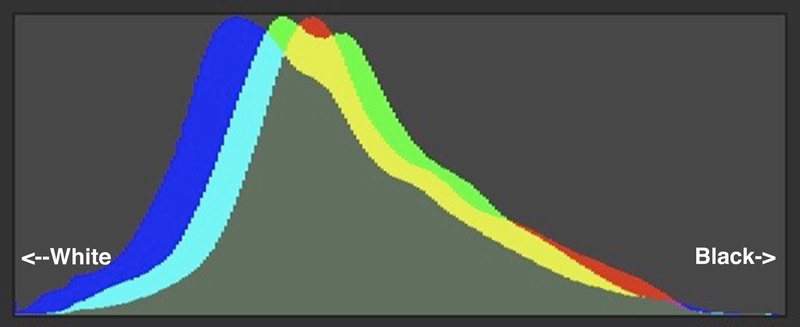By coincidence I was browsing through my note files the other day, where I found one reference that attempted to figure out how much better an image sensor could get and this sidetracked my attention for a few minutes.
It's all about photons, obviously. The maximum number of photons we could collect is something along the lines of 12,590 * SENSINGAREA (in microns squared). What happens today, though, is that nowhere near that implied number is actually measured in our cameras.
First, we lose photons to the Bayer filtration. It used to be that we lost two-thirds of the photons this way, but that number has been going down a bit as camera makers reduced the filtration levels. Next, we have quantum efficiency (QE). That number used to be just below 50%, while these days you can find some sensors living above that line. Still, 50% is another stop of light loss. Then, of course, we have any downstream math and noise that can change the implied number of photons we caught from the correct total.
Meanwhile, at the high end of sensor, we have "saturation." If your charge well is smaller than MAXPHOTONS - BAYERLOSS * QE * TIME (shutter speed), You don't get anything close to maximum photons at all, meaning that you've effectively reduced your potential dynamic range.
And that's where today's press release from Sony Semiconductor comes into play.
Everyone's been chasing making charge wells bigger or figuring out a way to handle overflow. Not Sony. They turned the problem on its head: what if the maximum DN (digital number) that you record is black? And the lowest is white?
That's exactly what Sony's new Caligos sensors do: they record the absence of photons to a maximum (e.g. fill the well charge) while then recording the presence of photons as a low number. 0000 0000 0000 is white, 1111 1111 1111 is black. (Think of it as a reversed histogram.)

As Fujifilm proved with Velvia slide film, photographers don't really care about black. A quick drop in the deep shadows to black is perfectly fine with most, as long as no artifacts, grain, or noise accompanies that cut off toe at the bottom of the exposure slope.
Thus, Sony's new Caligos sensor record black, blacker black, and blackest black, but they'll basically all just be black ;~). But without noise.
At the other, lower end of the DNs, most cameras are going to record the center of white with a Caligos sensor at a value of about 500 (for 12-bit data). That provides plenty of leeway for moving highlight data around without any color shifts or other issues. It also preserves the noise curve around that maximum white value, which allows us to address it more readily, should we want to. That said, what's a teeny bit of noise in white look like? White! More interestingly, a slight dither (noise) of white values after conversion and post processing helps with metamerism when you print your image (i.e. a total white spot no longer just looks like paper).
The Caligos sensor press release was a Development Announcement. Sony Semiconductor showed preliminary results from a small test sensor that look very encouraging. Sony hopes to put this new sensor into production next year.
v





